You want to record some narrated audio and add them to your PowerPoint project but you are either unable to play the recordings or it won’t record at all.
That must be freaking you out. You are probably wondering:
Why is my audio not recording on PowerPoint?
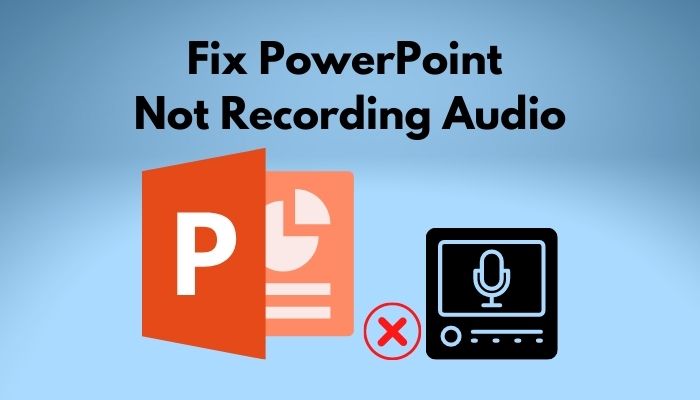
You don’t need to worry too much about this because I have faced this issue myself and I was able to resolve it very quickly. Keep reading to find out how that happened.
I don’t want to keep you waiting much longer so grab a cup of coffee and stay with me until the end. Also, don’t skip any part because you might end up confused otherwise.
How To Fix PowerPoint Not Recording Audio?
You can fix PowerPoint not recording audio by adjusting your privacy settings, running the audio troubleshooter, or by setting your microphone as the default recording device. You might also need to update your audio drivers.
Before I start with the fixes, you need to make sure that your microphone volume is not set too low or that your microphone isn’t muted.
Here are the ways to fix PowerPoint not recording audio:
1. Troubleshoot Audio Device
The first thing you need to do when PowerPoint is not recording audio is check and make sure that your microphone is properly working and connected to the computer.
You must make sure that your microphone is connected to the Mic In jack, out of the 3 jacks available on your sound card. This jack is typically red in color. Also, don’t forget to switch on your microphone if it has a switch like that.
Also, check out our separate post on how to fix Powerpoint not saving error.
Once this is done, you need to do the following steps to make sure your microphone or headphone is connected properly:
- Go to your Start menu and launch the Control Panel.
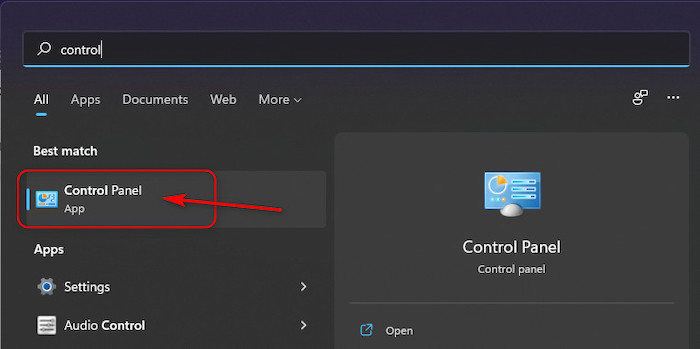
- Click on Hardware and Sound.
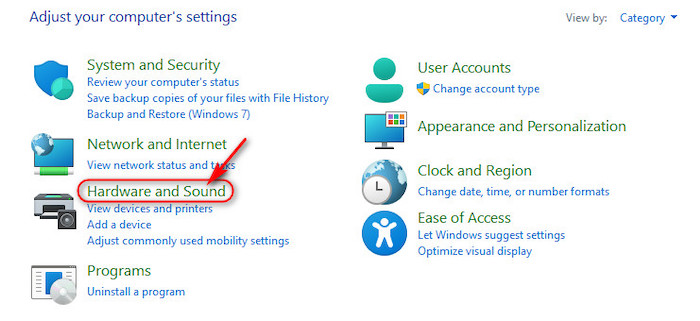
- Next, click on Sound and look for a green tick icon on your microphone as shown below. If you connected an earphone, look for your earphone instead.
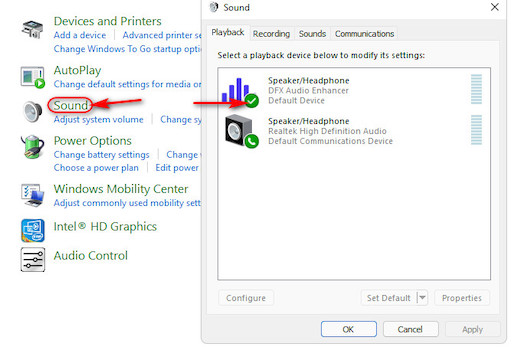
- If you don’t see anything like this, then try unplugging and plugging it back in.
- Once you see the tick icon, select that and select the Default Device option.
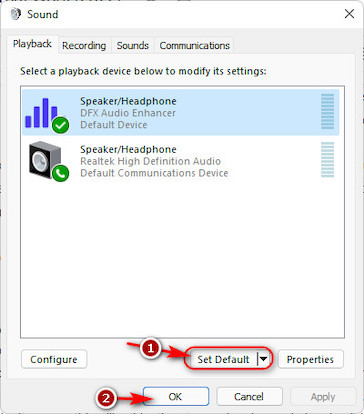
If this didn’t solve anything, you can try the audio troubleshooter available on Windows 10. Here are the steps to do this:
- Press the Windows key and I key at the same time to open the Settings window on Windows 10.
- Click on Update and Security as shown below.
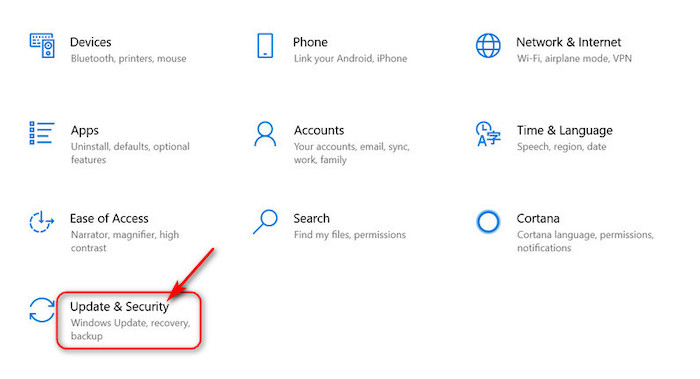
- Switch to the Troubleshoot tab and then look for the Recording audio option on the right pane and click on it.
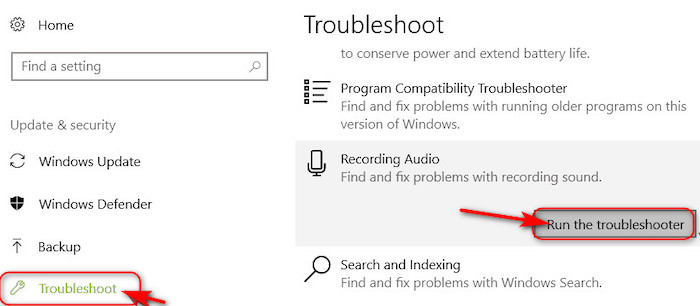
- Follow the instructions and once troubleshooting is completed, go back to your PowerPoint slide and try recording again.
2. Enable Microphone Access in Privacy Settings
Windows 10 introduced a bunch of new settings to address privacy issues and one of them involves blocking microphone access for some apps.
What you need to do is enable microphone access for Microsoft PowerPoint through Windows 10 settings. Follow these steps to do this:
- Launch the Settings window on your Windows by pressing the Windows key and I key at the same time.
- Once there, click on Privacy.
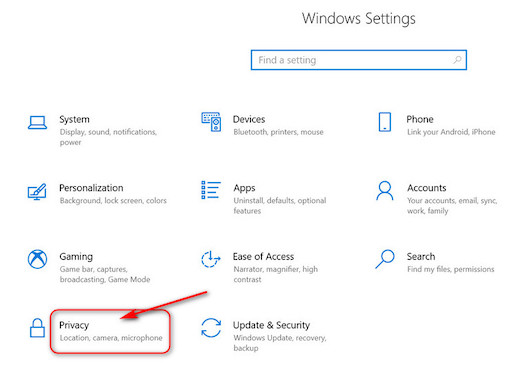
- Look for the microphone section on the left pane and then switch the toggle for Allow Apps To Access Your Microphone to on from the right pane.

Check if there are any improvements while recording audio. If not, move on to the next fix.
Check out our expert-recommended error fixing, Microsoft Teams Error Code 42B.
3. Perform A Clean Boot
There are hundreds of different processes running on your Windows at any given time so there is a good chance that one of these processes could be causing issues with microphone access.
In order to figure out if this is indeed an issue, you need to perform a clean boot by following these steps:
- Sign in to an Administrator account on your computer.
- Press the Windows and R key at the same time to launch a Run window. Type in msconfig and hit enter.

- Once you are in the System Configuration window, switch to the services tab and check the Hide all Microsoft services at the bottom of the window.
- After that, click on the Disable All button at the bottom right corner.
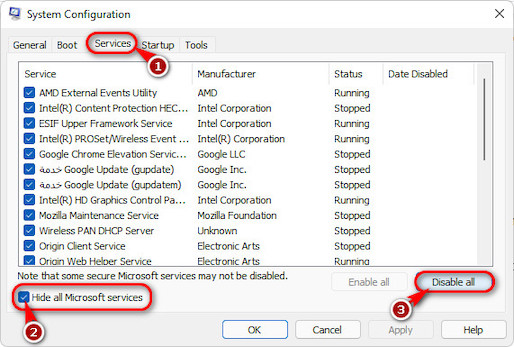
- Switch to the Startup tab next and click on Open Task Manager.
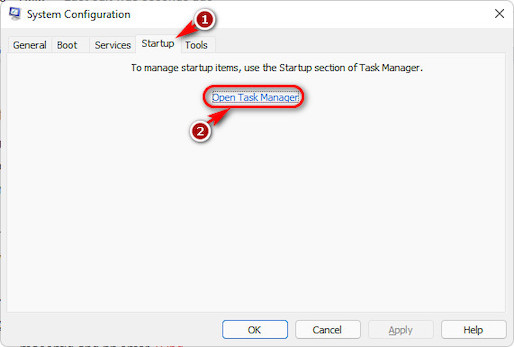
- You should see a new window with various programs. These programs will boot when you turn on your computer. You need to select any suspicious or unnecessary programs and disable them.
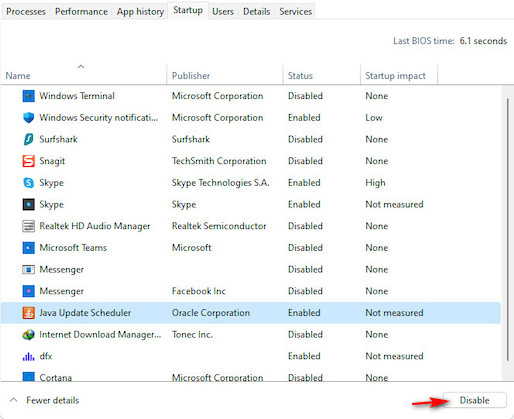
- After you have disabled all the necessary programs, close the Task Manager window and click OK on the previous window.
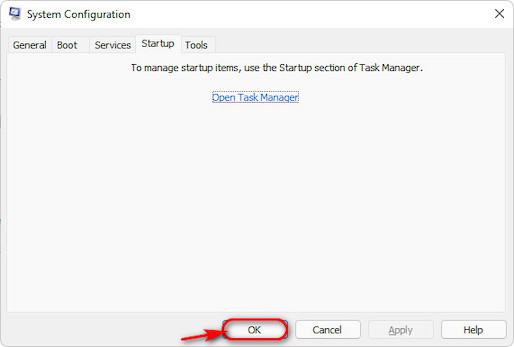
- Restart your computer.
- After a restart, try recording in PowerPoint again, and if it still doesn’t work, then it means it’s not a software issue. However, if everything is working fine, then one or more of the services are responsible for this issue.
Here’s a complete guide on how to Merge Microsoft Accounts.
4. Update Audio Drivers
If you haven’t updated your sound drivers to the latest version yet, then you need to do that immediately as corrupted audio drivers will definitely cause problems with recording.
You can follow these steps to get up-to-date audio drivers:
- Search for Device Manager in the Start menu and open it.
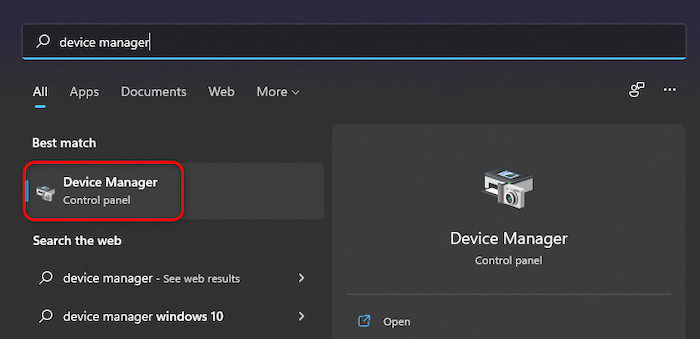
- Do a double-click on Sound, game, and game controllers to show see the audio drivers.
- Perform a right-click on the audio driver that’s in use and select Update Driver.
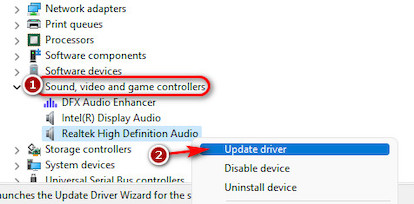
- You can also choose to Uninstall the device and then reinstall the driver from the driver’s website.
If you couldn’t get this to work, or this feels a little complicated, you can try using a third-party Driver manager like IOBit Driver Booster and DriverEasy to update your audio drivers.
5. Restart Audio Services
This doesn’t always happen but the audio services on your Windows might be malfunctioning. You can fix this by rebooting the services.
Here’s how you can reboot audio services:
- Go to your Start menu, type services, and click on the first result.
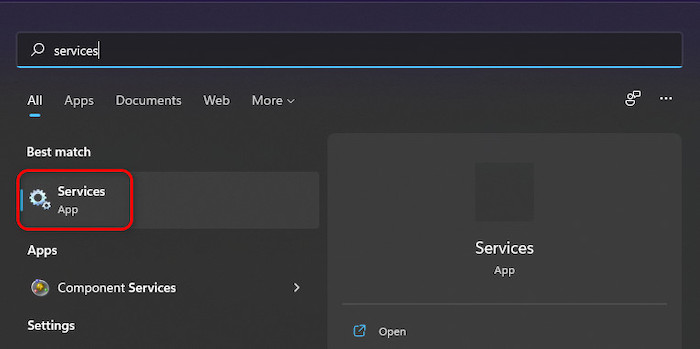
- In the new window, click on any Service on the right and press the W key on your keyboard once.
- After that, scroll down a little bit and look for Windows Audio, and right-click on it. Select Restart from the context menu.
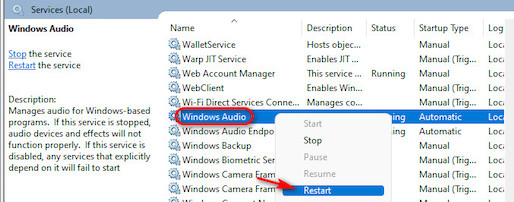
- Do the same thing for Windows Audio Endpoint Builder.
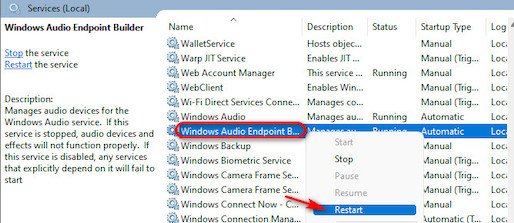
- Go back to your PowerPoint window and try recording audio once again.
But before that, do check our latest post on the Change Your Background on Microsoft Teams.
FAQ
Question: Why can’t I hear the audio on my PowerPoint?
Answer: You can’t hear the audio on your PowerPoint because the volume is very low. To change that, click on the speaker icon at the bottom right corner beside the time and click on Mixer. Move the volume slider for PowerPoint all the way to the top.
Question: How do you add audio to a slide?
Answer: You add audio to a slide by selecting the slide you want to add the audio to from the left pane and then switching to the Insert tab from the top. Click the small arrow icon below Audio and select Audio from file to browse the audio file to insert. Once that’s selected, press OK.
Final Thoughts
We all need to add small audio recordings to liven up our presentations, whether it’s for a college project or a business meeting. So, I understand the frustration when you face bugs like these and need a quick fix.
I hope this article was able to provide the right fix that helped you solve this issue and to get back to making a wonderful presentation. Remember, you can always reach us when you need a quick fix.




